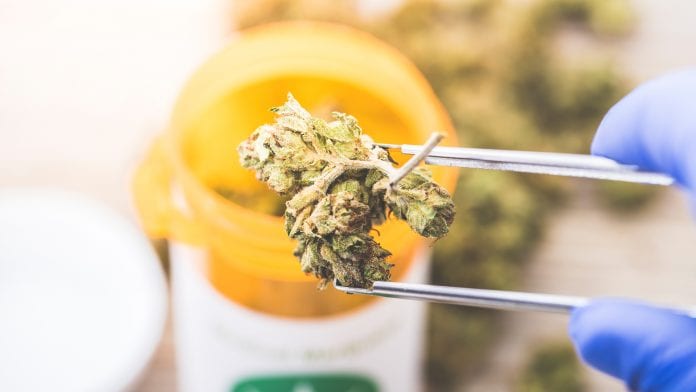
The Centre for Medicinal Cannabis (CMC) is urging NICE to consider the potential therapeutic value of different cannabis formulations for a variety conditions.
The CMC has published a paper, in conjunction with doctors from Sapphire Medical Clinics, which queries whether NICE should be asking different questions when assessing cannabis medicines.
Last week The National Institute for Health and Care Excellence (NICE) released their updated guidance on the use of cannabis-based medicinal products (CBMPs) in four disease areas.
NICE put forward its cannabis oil approval, including the use of Nabilone as an add-on therapy in chemotherapy-induced nausea and vomiting, THC:CBD spray in multiple-sclerosis induced spasticity, and CBD for the drug resistance paediatric epilepsy Dravet and Lennox-Gastaut syndromes.
These recommendations will come as a relief to some but could be frustrating for many patients, who find therapeutic relief with cannabis for a variety of conditions.
Medical cannabis for a variety of conditions
Last week CMC and YouGov revealed, from the largest ever polling sample, that around 1.4 million users in Britain (2.8% of the adult population) are using cannabis to treat chronic health conditions.
The paper, published today, puts forth the case that the starting point should be the unique position of CBMPs in the UK healthcare system.
The change in legislation in 2018 has meant that there will be greater demand for a medicinal product which, for most clinical indications, is going to be prescribed on an unlicensed basis, which is a completely unprecedented situation.
The first issue to consider are the medical products selected for evaluation. NICE logically selected the studies with the highest level of evidence (RCTs) and in this review the committee decided to exclude observational data once a threshold of five RCTs are reached per condition.
NICE looked at the questions of whether CBMPs with market authorisation for other indications (when used to treat chronic pain) illustrate evidence of clinical efficacy, and whether they are cost-effective for the NHS.
Whilst these are relevant questions, the paper explores whether the answers have any clinical applicability when seen in a wider context.
Expanding analysis of cannabis products
The authors examined the proportions of different products prescribed in more mature markets such as Canada, Italy or Germany. This was to help reframe the starting questions to better consider the wider socioeconomic factors for further evaluations of CBMPs for other indications, not covered by the recent NICE guidance.
Currently, NICE classify all CBMPs as one medicine. However, CBD isolate, which has proven efficacy for children with epilepsy, will not work as well as a high THC cannabis flower on adults with chronic pain, and vice versa.
The CMC is urging NICE to acknowledge that the therapeutic potential of different CBMP formulations may vary widely, and if considered, would be better placed to have a more relevant appraisal of the existing literature.
Dr Daniel Couch, Medical Lead, Centre for Medicinal Cannabis, said: “Cannabis as a medicine is unlike any other novel agent, in that it is already in widespread use outside the NHS.
“Up to 7% of NHS patients may already be using cannabis solely as a medicine, albeit without a prescription, and obtaining symptomatic relief through street vendors who are not subject to the good manufacturing processes and standards present amongst pharmaceutical suppliers.
“The tried and tested drug evaluation process may not take these non-clinical and wider-societal risks into account. An adaptive approach should be debated.”
The report calls on NICE to carry out a parallel analysis on the products that are commonly prescribed clinically for specific indications and consider the highest level of evidence available for those classes of products.
The paper notes that answers to these questions may assist in finding suitable short-term solutions for patients who could benefit from CBMPs, as we wait for RCTs to prove efficacy in the medium to long-term.
Click here to read the paper, co-authored by Dr Simon Erridge, and Dr Mikael H Sodergren with a foreword by Dr Daniel Couch.


















